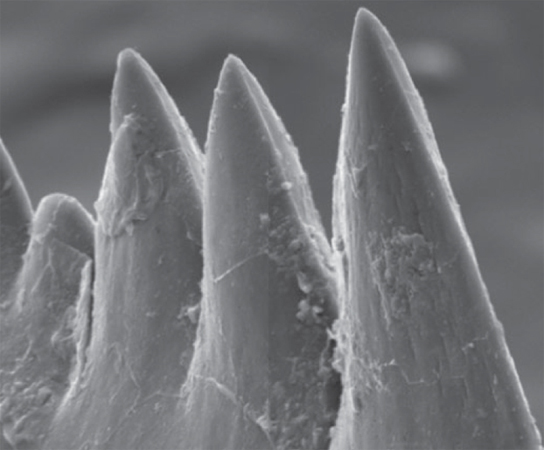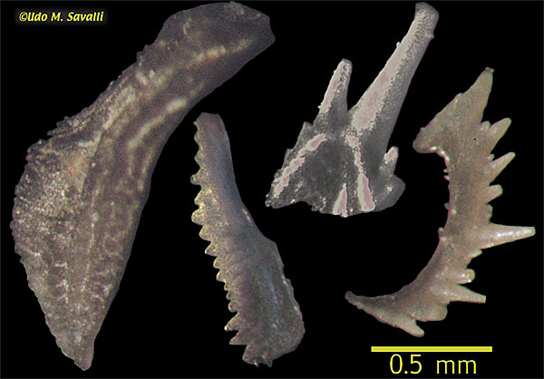
The conodont, an extinct primitive marine vertebrate, had the sharpest teeth ever known, with tips just one-twentieth of the width of a human hair, and was able to apply pressures that were comparable with the ones made with human jaws.
Conodonts had these razor-sharp teeth and they were jawless vertebrates that evolved 500 million years ago in the Neoproterozoic era of the Precambrian eon and went extinct during the Triassic period, about 200 million years ago. Conodonts roamed Earth for longer than any other vertebrates and they were the first creatures to evolve teeth.

Conodonts are chordates that resembled eels. The entire class of conodonts was wiped out by the Triassic-Jurassic extinction event, which occurred 200 million years ago.
Researchers used X-rays to create computer models of the eight paired, food-processing structures from fossils of the Wurmiella excavata. The tips of the teeth are just 2 micrometers across. Using finite-element analysis, which uses numerical analysis to approximate the solutions of partial differential equations, the scientists compared conodont teeth with similar-sized bat molars. The findings were published in the journal Proceedings of The Royal Society B.
Conodonts relied on minuscule forces that were concentrated because of the extreme sharpness of their teeth. They didn’t use muscular force as mammals do and conodont teeth sliced from left to right, instead of up and down. The sharpness would have made the teeth brittle, but conodonts may have been able to re-sharpen them, a quality that other vertebrates have failed to evolve.
Reference: “The sharpest tools in the box? Quantitative analysis of conodont element functional morphology” by David Jones, Alistair R. Evans, Karen K. W. Siu, Emily J. Rayfield and Philip C. J. Donoghue, 14 March 2012, Proceedings of The Royal Society B.
DOI: 10.1098/rspb.2012.0147